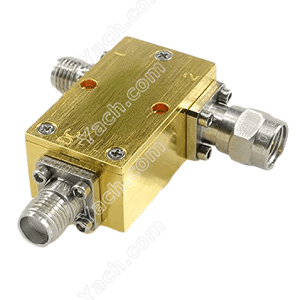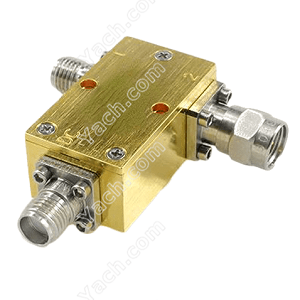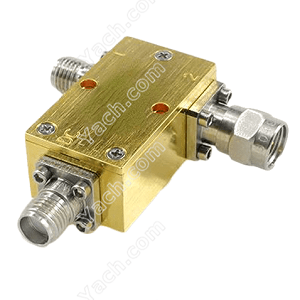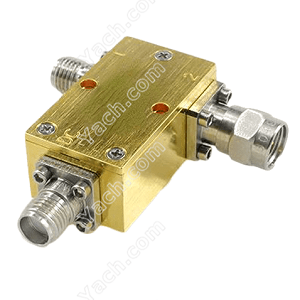Passive / active phased array radar introduction
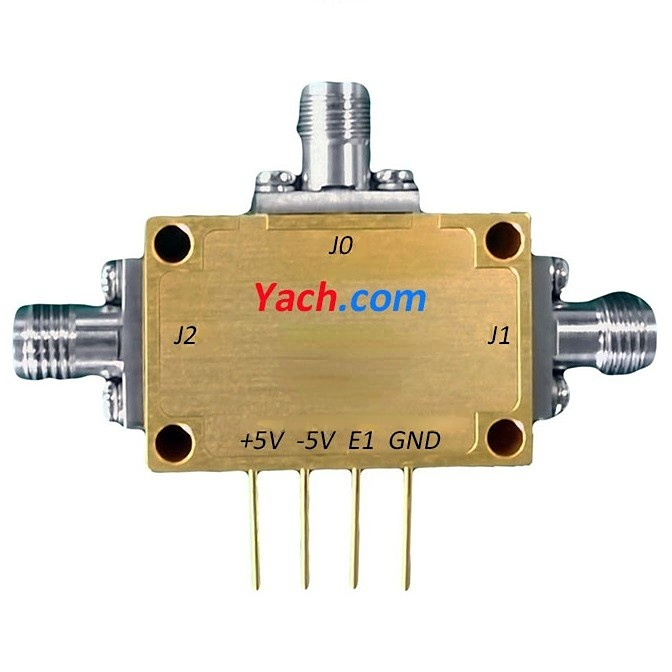 Coherent radar
Coherent radarCoherent radar means that the transmitted signal, local oscillator voltage, coherent oscillation voltage and trigger pulse of timer of radar system are provided by the same reference signal, so that the determined phase relationship can be maintained between these signals. At the same time, the received echo signal can also extract the phase information of the signal.
Phase shifter
The function of the phase shifter is to move the phase of the signal by an angle. It is a characteristic of the phase shifter to maintain a stable corresponding relationship between phase and frequency.
With the principle of signal superposition and phase shifter, the principle of phased array radar is ready to come out. Its basic idea is to provide phase length / cancellation interference by changing the phase of the signal transmitted by each radiating element, so as to form a beam in the desired direction, so as to control the beam direction without mechanical movement.
So, here comes the problem! For a linear array, how much phase should each phase shifter shift in order to form a beam pointing at a certain angle?
Simple calculation can be carried out through the following formula. For example, if the array element spacing is 15cm, the wavelength is 10cm, the beam azimuth is 30 degrees, and the second element needs phase shift of 360 * 15 * sin (30 °) / 10 = 270 ° relative to the first element, then the eighth element needs phase shift of 7 * 270 ° = 1890 ° relative to the first element minus n 360 °, that is, it needs phase shift of 90 °.
Beam width
Beam width refers to the angle range when the power of the main beam pattern decreases to a certain extent. The beam width when the power decreases by 3dB is called half power beam width.
The beam width is mainly related to the wavelength, aperture length and scanning angle of the antenna array. The intuitive understanding is that the more the number of array elements, the larger the array element spacing, the shorter the wavelength, the narrower the beam width, and the higher the antenna gain.
If the irradiation angle increases, the beam width and gain will deteriorate.
If the array element spacing is not appropriate, the radiation field of phased array antenna during scanning will form regular deleted lobes similar to the main beam in other directions other than the main lobe, and its position is a function of frequency and array element spacing. The following figure shows the deletion of lobes under different array element spacing, such as.
For example, for the phased array with rectangular grid, given that the maximum scanning angle is 90 degrees, the maximum spacing between array elements is half wavelength; And the shortest wavelength in the working frequency band shall be selected.
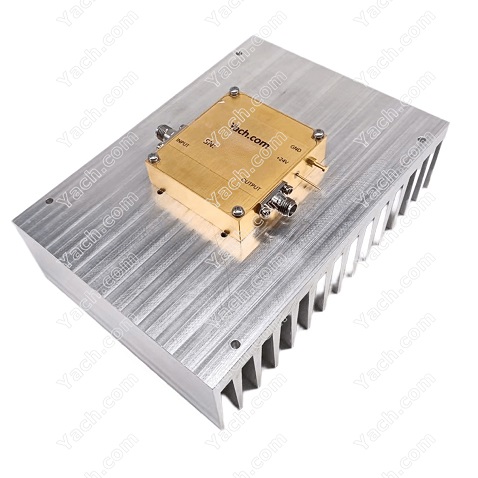 Passive phased array radar
Passive phased array radar
Passive phased array radar has only one transmitter and multiple antenna units. The wavefront of each antenna radiation source is spherical, but they are combined (superimposed) in front of the antenna to produce a plane wave traveling in a specific direction. Change the phase shift through computer control, so as to change the pointing angle of the beam θ。
Typical passive phased array radar system
-
AN/FPQ-16 PARCS at Cavalier Air Force Station
-
AN/MPQ-53
-
AN/MPQ-65
-
AN/SPQ-11 Cobra Judy
-
AN/SPY-1 Aegis combat system
-
AN/TPQ-36 and AN/TPQ-37 Firefinder radars
-
AN/APY-1/2 Boeing E-3 Sentry
-
AN/APY-7 for Northrop Grumman E-8 Joint STARS
-
AN/APQ-164 B-1B (Northrop Grumman formerly Westinghouse ESG)
-
AN/APQ-181 B-2 Spirit (initial version, now AESA)
Active phased array radar
Active phased array radar, also known as active electronically scanned array (AESA) radar, as radar technology is becoming more and more complex and the threat is becoming greater and greater, today's battlefield is more challenging and dangerous. In order to deal with these more complex threats, the world's latest fighters are equipped with active phased array radar.Each radiator of active phased array radar is equipped with a transmitting / receiving component, and each component can generate and receive electromagnetic waves by itself. Therefore, it has great advantages over passive phased array radar in bandwidth, signal processing and redundancy design.
The large bandwidth and agility of AESA radar enable the fighter to detect, track and identify more targets faster at a longer distance, and survive in a complex electromagnetic environment. It also has all-weather high-resolution synthetic aperture radar imaging, which provides pilots with a large surface image that can accurately identify and attack targets.
Linear matrix and plane matrix
The phased array can be linear or planar. Linear array is to synthesize multiple array elements into one signal before unified phase shifting, while plane array is that each array element has an independent phase shifter. A linear array can move the beam in one dimension, while a planar array can move the beam in two dimensions.
One of the inherent advantages of phased array radar is the rapid scanning and shape agility of antenna beam. So, what are the factors related to the speed of change?
For phased array antenna with phase shifter, the fast transformation ability of antenna beam direction depends on the calculation, transmission and conversion time of switching device and its control signal. In other words, the use of different types of phase shifters will have a great impact on the antenna beam conversion time.
Ferrite phase shifter
The basic principle of ferrite phase shifter is to use the external DC magnetic field to change the magnetic conductivity of ferrite in the waveguide, so as to change the phase velocity of electromagnetic wave and obtain different phase shifts.
The main advantages of ferrite phase shifter are high bearing power, low insertion loss and wide bandwidth. Its disadvantage is that the required excitation power is larger than that of pin tube phase shifter, and the switching time is on the order of microseconds (US).
Semiconductor PIN diode
The time when the initial state of PIN diode switch from "on" to "off" or opposite action reaches a stable state is called switching time. The phase conversion time of digital phase shifter with semiconductor PIN diode as switching device can reach the order of nanosecond (NS).
GaAs FET
GaAs FET switch is the main component of NC phase shifter. As a three terminal device, it can change the resistance between source and drain by controlling the gate bias voltage, so as to realize the switching action. The conversion time is also on the order of nanosecond (NS).
Typical active phased array radar system
-
AN/APG-80, for the F-16E/F Desert Falcon
-
AN/APG-77, for the F-22 Raptor
-
AN/APG-81, for the F-35 Lightning II
-
AN/APG-83 SABR, for the F-16V Block20 Viper and B-1B Lancer upgrades
-
AN/APY-9, for the E-2D Advanced Hawkeye
-
AN/APG-63(V)2 and AN/APG-63(V)3, for the F-15C Eagle, Republic of Singapore's F-15SG
-
AN/APG-79, for the F/A-18E/F Super Hornet and EA-18G Growler
-
AN/APG-82(V)1 for the F-15E Strike Eagle
-
AN/APQ-181 upgrade from PESA to AESA, for Northrop Grumman B-2 Spirit bomber
-
FlexDAR Flexible Distributed Array Radar
-
U.S. National Missile defense Sea-based X-band Radar (XBR)
-
AN/SPY-3 multifunction radar for U.S. DD(X) and CVN-21 next-generation surface vessels
-
AN/SPY-6
...
-
The active electric scanning array is composed of 2000 low-power X-band transceiver components. The transmitter and receiver of each radiation unit are separated, which has high flexibility, low RCS and wide bandwidth. Each transceiver module is 70mm * 3mm and can generate 10W RF power. Gallium arsenide (GaAs) technology is adopted.
...
...
Operation mode
Air to air: air to air search and tracking, ranging while searching, scanning while tracking, single target tracking, group target resolution, etc;Open space: topographic mapping, ground moving target tracking, ground moving target indication (GMTI);
Air sea: sea surface target detection and fixed target tracking.
In addition to the strong ability of low interception and anti-jamming, the other significant advantages of active phased array radar are the ability of beam agility and the ability of simultaneous multi beam. Of course, the reliability will also increase. The failure of multiple T / R modules will only reduce the antenna performance, but will not lead to failure.
- 上一篇:Power Amplifiers PA8375177 [2022-05-17]
- 下一篇:PIN Diode Switches SW517146 [2022-05-16]


